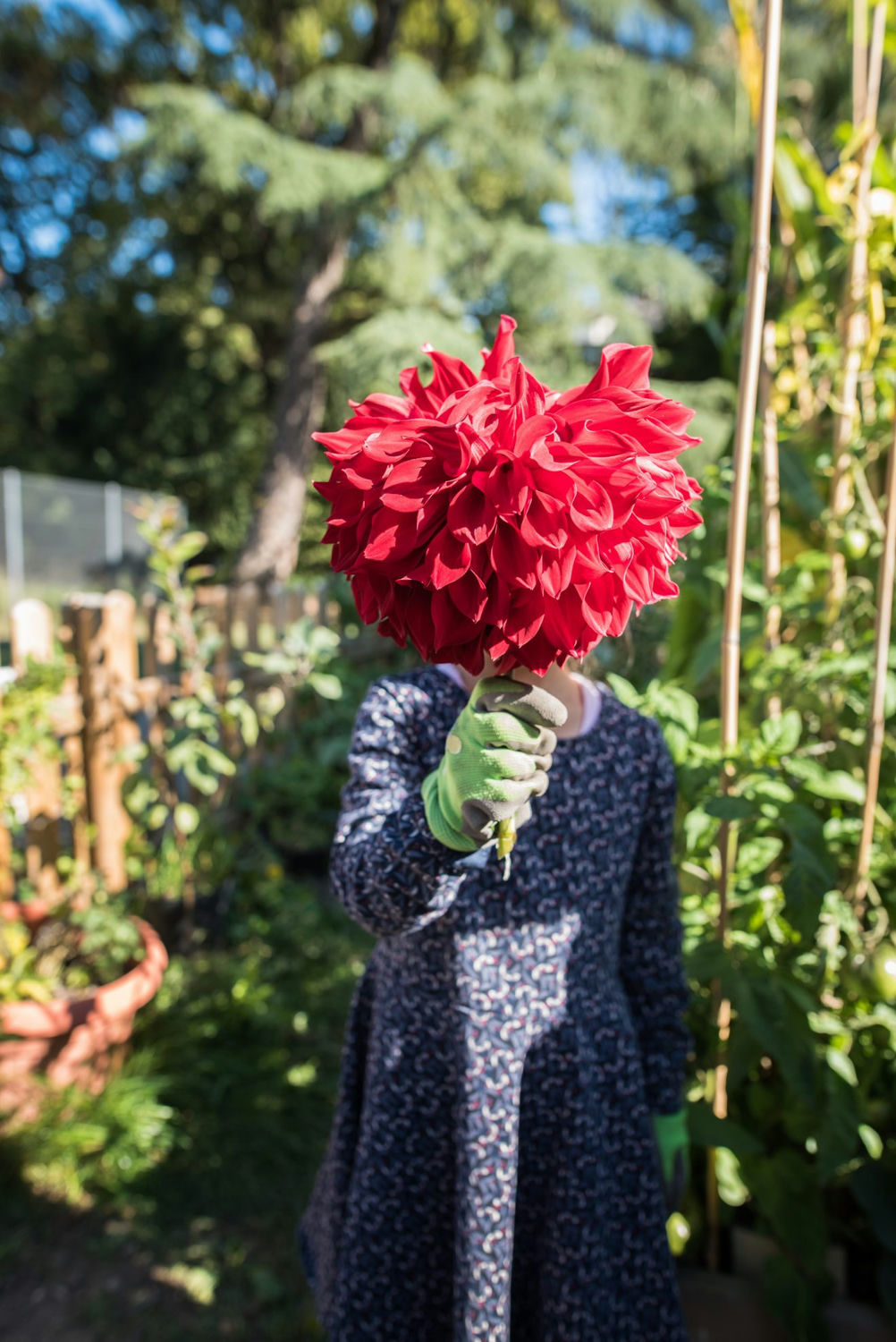What’s the point, and why and how can you use shredded branches in your vegetable garden?
Branch shredding is a very useful material in the vegetable garden, as it offers a number of advantages. First of all, it’s an excellent « organic fertilizer » that can be used to enrich the soil and provide essential plant nutrients. We’re using quotation marks here, because the shredded material itself is not a fertilizer! But it will serve as food for fungi, bacteria, insects and worms that will decompose the shredded material and transform it into humus, which is packed with plant nutrients.
Branch shredding is rich in carbon, which is essential for soil structure. By using it as a soil improver, you can add organic matter (OM) to your vegetable garden and improve soil fertility.
Organic matter, equal %, different results
Generally speaking, the more organic matter, the better. But beyond the rate of OM, what determines fertility is the ratio of OM to clay. It’s a much better indicator of fertility than the simple rate of MO.

In a sandy soil (clay = 7%) with only 2% Mo you are the oil king!
In a clay soil (clay = 20%), with 2% Mo you’re in hell!
Shredded branches, one product, 2 functions
As well as being a natural soil improver, shredded branches can also be used as mulch. When spread over the soil surface, it acts as a protective blanket that retains moisture, regulates temperature and prevents excessive water evaporation. Mulching with shredded branches thus helps to maintain a good level of soil moisture, reduce watering requirements and prevent the proliferation of weeds. What’s more, as it decomposes slowly, shredded branches enrich the soil with organic matter, encouraging the development of micro-organisms and earthworms, essential to plant health.
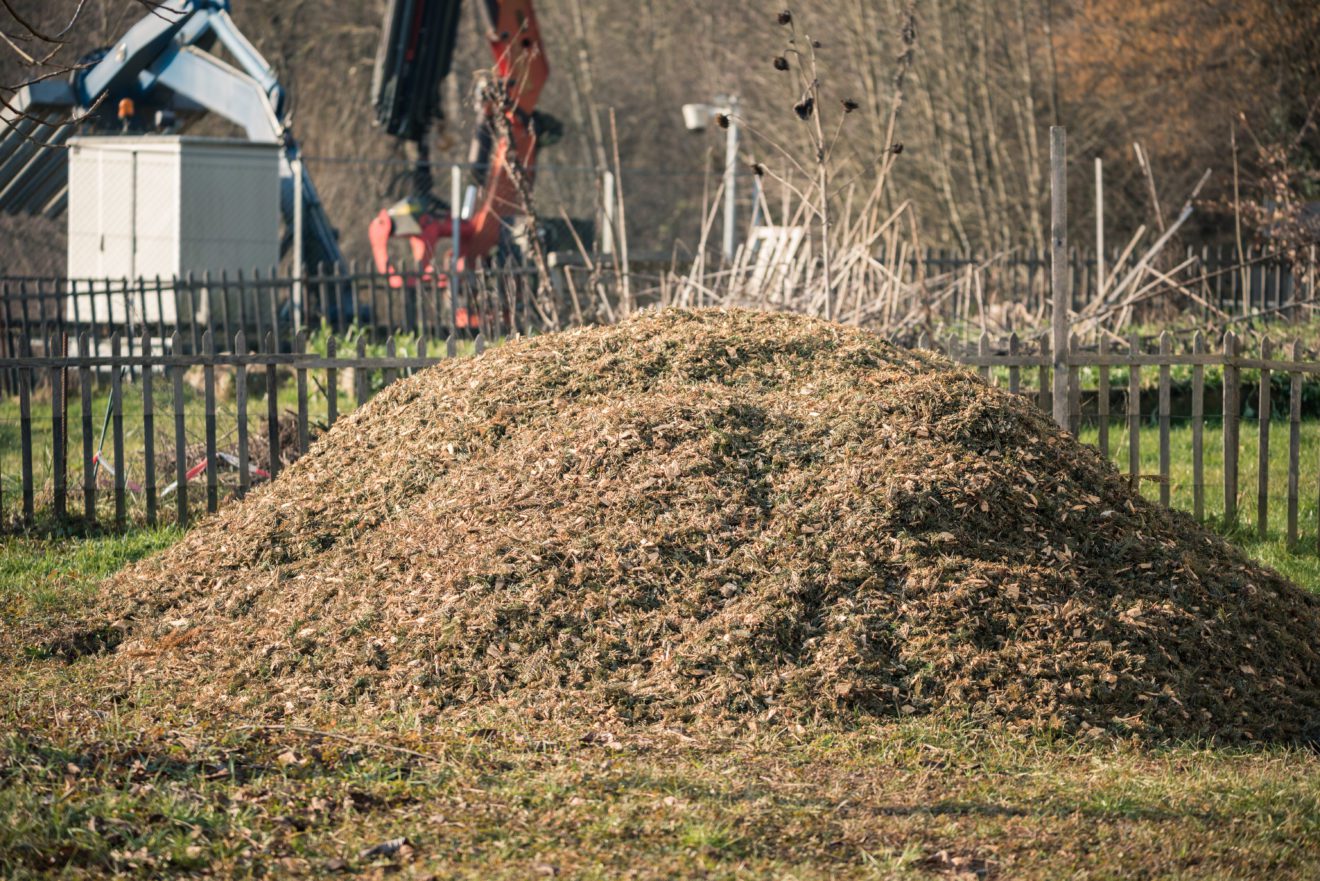
Where can I find shredded material?
Ideally, you should have trees or hedges to produce shredded material in your own vegetable garden, which you can shred using a shredder specially designed for the purpose (or pruning shears, but that takes longer…). Note that the finer the shredding, the faster it is degraded by the soil.
You can also recover it by pruning the green spaces around your home. Ask your local waste disposal center, tree pruner, municipal green spaces department or professional gardener. Once obtained, you can spread it directly on the soil surface around your plantings. It’s best to spread it to a thickness of around 5 centimetres to cover the soil effectively.

Shredding and nitrogen hunger
The main problem with mulch is nitrogen starvation. This problem arises when you bury the shredded material, mix it in with the first few cm of soil AND the soil is low in nitrogen. At this point, to begin degrading the soil, microbiology will draw nitrogen from the soil, leaving plants without resources to develop. Very easy to recognize, plants turn yellow and nothing grows (except legumes, which harbor nitrogen-fixing bacteria in their roots).
To prevent nitrogen hunger:
Do not bury the shredded material (at least not until it begins to decompose and turn black).
If you mix it (to rapidly increase soil fertility and texture, Cf. massive inputs), spread a 50/50 shred/compost mixture.
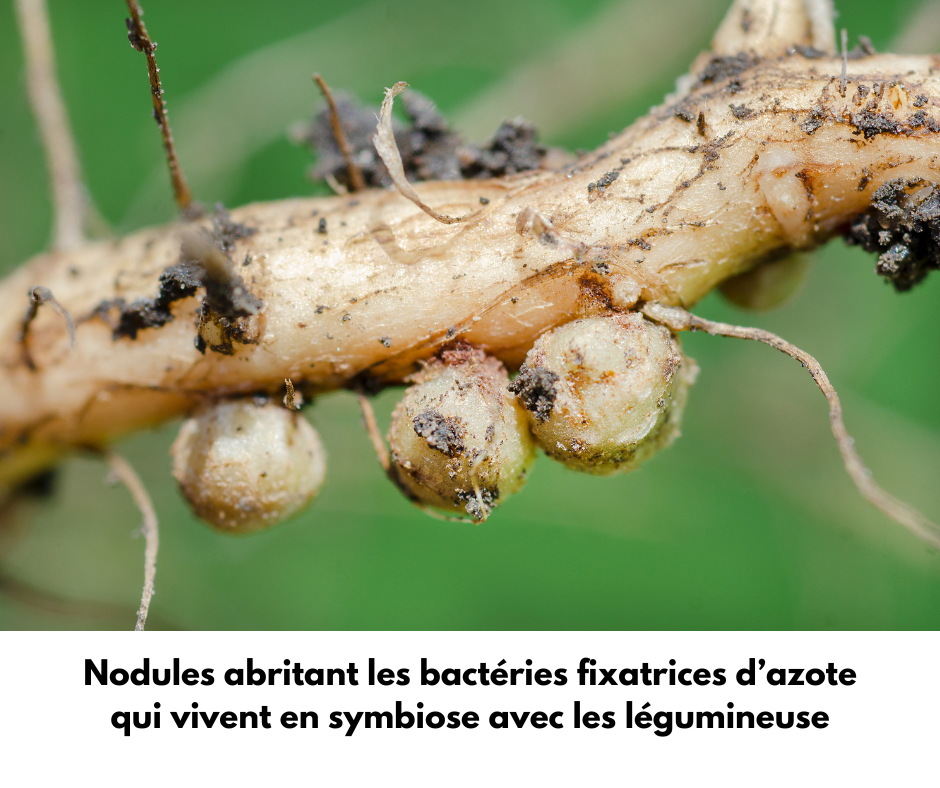
Shredded fir (and other softwood trees)
We’ve all heard « nothing grows under a Christmas tree ». And it’s true! But that’s mainly due to the fir’s superficial root system, which hogs all the water.
« Pine shavings are acidic! «
According to ADEM studies, all composting material goes through an acid phase. But in comparison, grass is much more acidic than softwood shavings.
You don’t know what to do with your Christmas trees, eat them!!!
(well, don’t eat them directly… give them to your soil, feed the soil life, it will feed your plants).
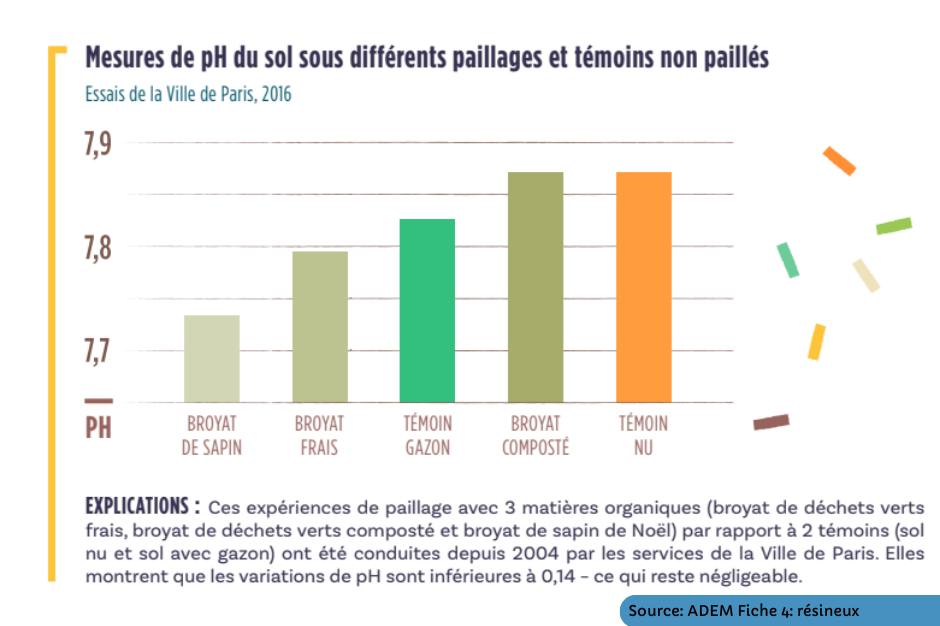
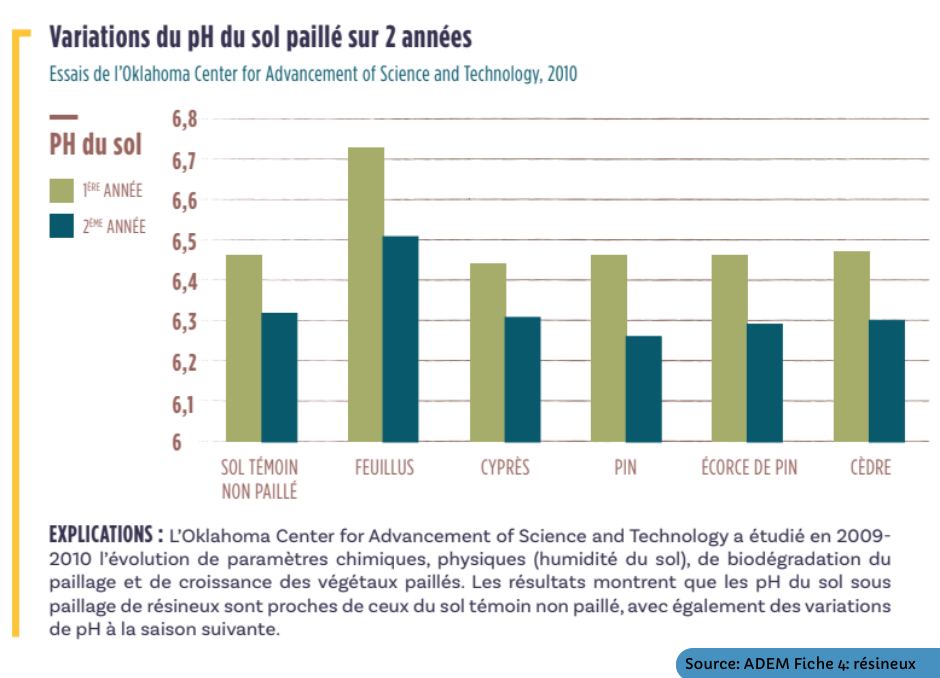
Shredded or RCW?
RCW stands for Ramial Fragmented Wood. It was studied in the 1970s by Edgar Guay, Lionel Lachance and Alban Lapointe, agricultural engineers in Canada. And to be able to compare what is comparable, RCW has been defined (arbitrarily) as :
- Twigs of the year
- Shredded branches less than 7cm in diameter
- Max. 20% softwood
- Be fragmented with a shredder
- RCW should be spread no more than 48 hours after shredding.
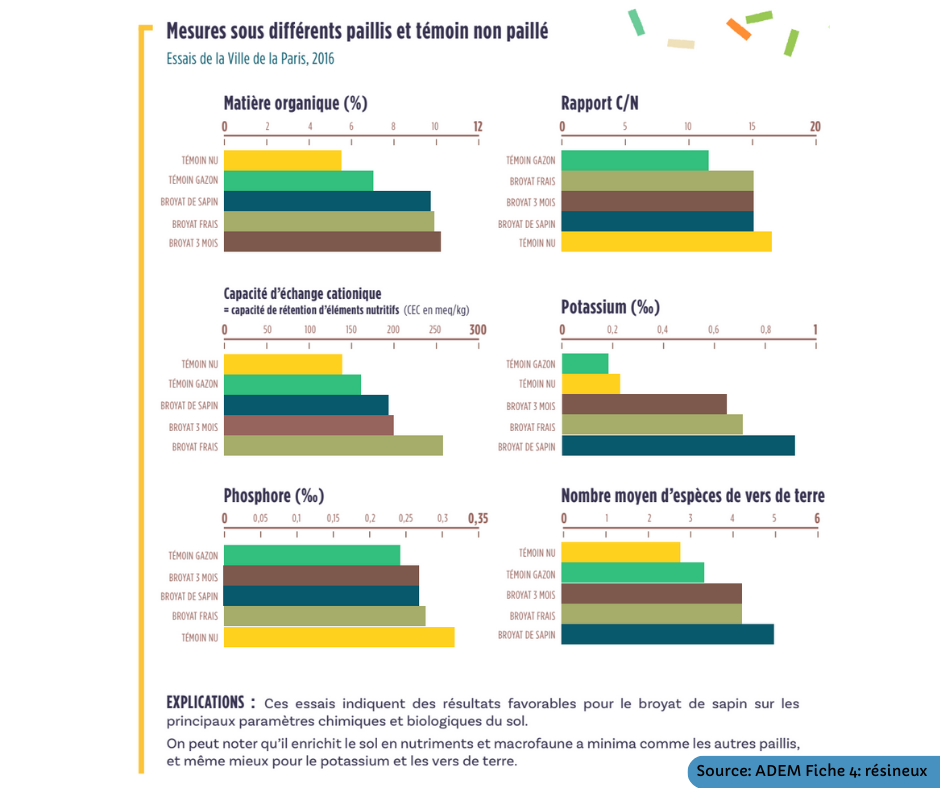
And no, shredded fir does not harm soil life…
In practice :
- Finding RCW is very difficult
- Finding free RCW is almost impossible
- Having used RCW and shredded material on the same plot, we have not seen any significant differences (RCW degrades slightly faster).
- Shredding is free, and if it comes from your hedges and shrubs it’s even better!
- Fir shavings are perfectly usable.
- Cedar shavings also take 2 or 3 years to decompose.

In conclusion
There are many advantages to using shredded branches in the vegetable garden. In addition to being an organic « fertilizer » with a delayed effect, it feeds plants and enriches the soil with organic matter, structure and considerably increases the useful water reserve of your vegetable garden. Used as a mulch, it helps maintain soil moisture, regulate soil temperature and reduce weed growth. To get the most out of it, we recommend using well-decomposed shredded branches, spreading them on the soil to a thickness of around 5 centimetres. By using shredded branches responsibly, you’ll contribute to the fertility of your vegetable garden, while limiting the waste of plant waste and storing carbon in the soil.
To find out more about shredding and RCW
RCW file (Ver de terre Production):
The role of carbon in agriculture, by Pascal Boivin
https://www.youtube.com/watch?v=917z47-UgzA&t=6s
ADEM
RCW (HEPIA)
https://www.frij.ch/FileDownload/Download/3225
Discover our tool to calculate the quantity of shred, straw or RCW to add according to the surface area of your garden.
